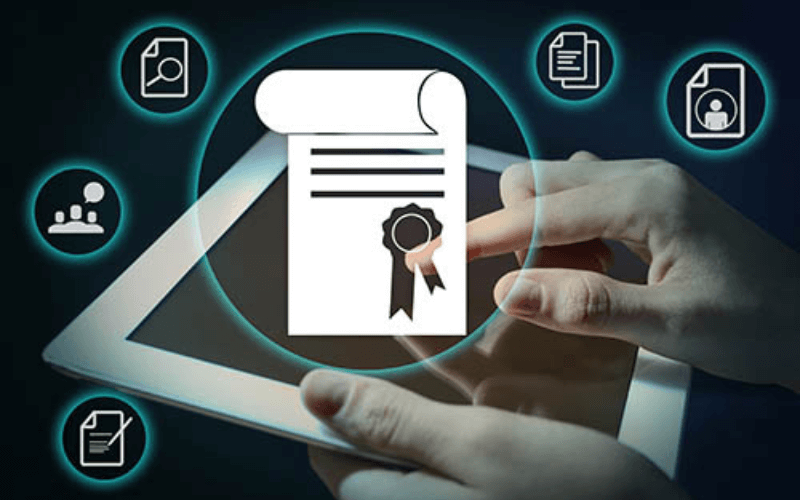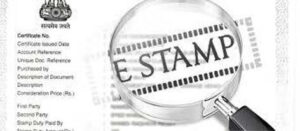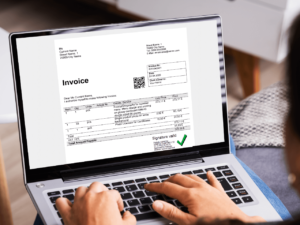What is a digital signature certificate?
A digital signature certificate is a secure digital key issued by certifying authorities to validate and certify the identity of the certificate holder. Digital signatures make use of the public key encryption to create the signatures. Contained within a digital signature certificate are details such as the user’s name, PIN code, country, email address, certificate issuance date, and the certifying authority’s name. A digital signature certificate can be used to access information or services on the internet or to sign certain documents digitally. A digital signature certificate is also a legal way of signing documents electronically, as it ensures the authenticity, integrity and non-repudiation of the signer.
What is the need for a digital signature certificate?

The need of a digital signature certificate is to provide a secure and authentic way of signing electronic documents and transactions on the internet. A digital signature certificate can help you to:
- Prove your identity and authority to the receiver of the document or transaction.
- Ensure the integrity and non-repudiation of the document or transaction, meaning that it has not been altered or denied by the sender.
- Access information or services that require authentication, such as e-filing, e-tendering, e-banking, etc
- Comply with the legal requirements of certain documents or transactions, such as company registration, GST registration, trademark registration, income tax filings.
A digital signature certificate is issued by a certifying authority (CA) that verifies your identity and credentials before issuing the certificate. There are different types of digital signature certificates (DSC) for different purposes and levels of security. You can apply for a digital signature certificate online by visiting any of the licensed CA’s websites. You will need to provide some documents and pay a fee for obtaining the certificate. The validity period of a digital signature certificate can range from one year to two years.
How to get a digital signature certificate?
To get a digital signature certificate, you need to follow these steps:
- Choose a certifying authority (CA) that is licensed by the Controller of Certifying Authorities (CCA) and offers the type and class of certificate that you need. You can find the list of licensed CAs and their services at this link.
- Visit the website of the CA and fill out the online application form for the digital signature certificate. You will need to provide some personal and professional details, such as your name, email address, phone number, organization name, etc.
- Submit the required documents to verify your identity and address. You can either upload scanned copies of your documents online or visit the CA office with the original documents and self-attested copies. Alternatively, you can also use Aadhaar eKYC based authentication, if offered by the CA, and avoid submitting any documents.
- Pay the fee for the digital signature certificate. The fee may vary depending on the type and class of certificate and the validity period. You can pay online using a credit card, debit card, net banking, or other modes of payment.
- Download and install the digital signature software to generate your public and private keys. You will also need to install a USB token or a smart card reader to store your keys securely.
- Receive your digital signature certificate via email or courier from the CA. You can also download it from the CA website using your login credentials. You will need to activate your certificate using a PIN or password provided by the CA.
- Register your digital signature certificate on the portal or website where you want to use it.
How to use a digital signature certificate?

Class 3 digital signature certificate (DSC) for an individual is issued in a USB token. You need to connect it to the USB drive of your laptop or desktop and launch TRUESigner PRO. You can select the PDF document you wish to sign and click on Submit to digitally sign the document. If you are a company looking to sign documents in bulk, an organization’s document signer certificate (Class 2) is available in PFX format. It can be securely installed in a keystore on the signature server (TRUESigner ONE), APIs can be integrated in the ERP system and seamless signing can be done from within the ERP system itself. Class 3 certificates can also be installed in a Hardware Security Module (HSM) and can be used via signing APIs from the ERP system.
How to check the validity of the digital signature?
To check the validity of a digital signature certificate, you can follow these steps:
- Open the file that contains the digital signature you want to view in Adobe Reader or any other PDF reader that supports digital signatures.
- To validate the signature, right-click on the validity unknown icon and click on Validate Signature.
- You will get the signature validation status window, proceed by selecting ‘Signature Properties’.
- Click on Show Signer’s Certificate and select Trust.
- Click Add to Trusted Identities and click OK.
- Select all the check boxes of the new window and click OK.
- You will see a green tick mark on the signature, indicating that it is valid.
You can also view the details of the signature and certificate, such as the signer’s name, issuer, validity period, and more by clicking on Show Signer’s Certificate and then View Certificate
Alternatively you can use Truecopy to automatically verify the validity of the digital signature in PDF documents. This is useful if you have signed PDF files in bulk that you need to verify.





